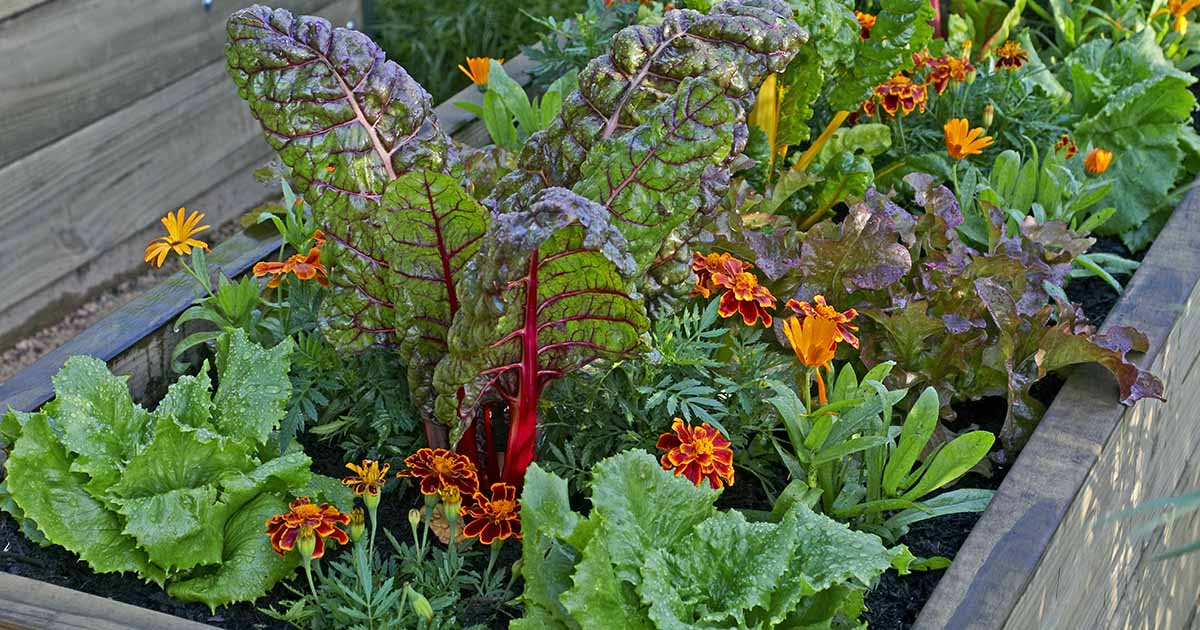The Ultimate Guide To Companion Planting For Romaine Lettuce
The Ultimate Guide to Companion Planting for Romaine Lettuce
Lettuce is a popular and versatile vegetable that can be grown in a variety of climates. It is also a relatively easy crop to care for, making it a good choice for beginner gardeners.
One way to improve the health and yield of your lettuce plants is to use companion planting. Companion planting is the practice of planting certain plants together that benefit each other in some way.
There are many different companion plants that can be grown with lettuce, but some of the best include:
- Carrots: Carrots help to improve the drainage of the soil, which can help to prevent lettuce from bolting.
- Chives: Chives help to repel aphids, which are a common pest of lettuce.
- Cilantro: Cilantro attracts beneficial insects, such as ladybugs, which help to control pests.
- Marigolds: Marigolds help to repel nematodes, which are a soil-borne pest that can damage lettuce roots.
- Nasturtiums: Nasturtiums attract beneficial insects, such as hoverflies, which help to control pests.
- Radishes: Radishes mature quickly, so they can be planted as a marker crop to show where the lettuce will eventually grow. They also help to loosen the soil, which can benefit lettuce roots.
- Spinach: Spinach and lettuce have similar growing requirements, so they can be planted together.
In addition to these specific plants, there are a few general principles of companion planting that can be applied to lettuce. For example, it is a good idea to plant lettuce with plants that have different root systems. This will help to prevent competition for nutrients and water.
It is also a good idea to plant lettuce with plants that have different heights. This will help to create a more diverse garden that is more resistant to pests and diseases.
By following these principles of companion planting, you can help to ensure that your lettuce plants are healthy and productive.
[MAIN CONTENT]
Benefits of Companion Planting
There are many benefits to companion planting, including:
- Increased crop yield: Companion plants can help to improve the growth and productivity of other plants. For example, carrots can help to improve the drainage of the soil, which can help to prevent lettuce from bolting.
- Disease and pest control: Companion plants can help to repel pests and diseases. For example, marigolds help to repel nematodes, which are a soil-borne pest that can damage lettuce roots.
- Attract beneficial insects: Companion plants can attract beneficial insects, such as ladybugs and lacewings, which help to control pests.
- Improved soil health: Companion plants can help to improve the overall health of the soil. For example, legumes fix nitrogen in the soil, which can benefit other plants.
- Increased biodiversity: Companion planting can help to increase the biodiversity of your garden. This can make your garden more resilient to pests and diseases.
How to Choose Companion Plants for Lettuce
When choosing companion plants for lettuce, there are a few factors to consider:
- The needs of the lettuce plant: Lettuce is a relatively shallow-rooted plant, so it is important to choose companion plants that have similar root systems.
- The pests and diseases that are common in your area: Choose companion plants that will help to repel or control the pests and diseases that are common in your area.
- The overall look of your garden: If you are concerned about the aesthetics of your garden, you can choose companion plants that will complement the appearance of your lettuce plants.
Some Tips for Companion Planting with Lettuce
- Plant lettuce with plants that have different root systems: This will help to prevent competition for nutrients and water.
- Plant lettuce with plants that have different heights: This will help to create a more diverse garden that is more resistant to pests and diseases.
- Plant lettuce with plants that have similar growing requirements: This will help to ensure that both plants are able to thrive.
- Experiment with different companion plants: There are many different companion plants that can be grown with lettuce, so experiment to see what works best in your garden.
Conclusion
Companion planting is a great way to improve the health and productivity of your lettuce plants. By following the tips in this guide, you can create a more diverse and pest-resistant garden that will produce delicious lettuce all season long.
Romaine lettuce is a delicious and versatile vegetable that can be enjoyed in many different ways. But did you know that there are certain plants that can help to improve the growth and taste of romaine lettuce?
That's right, companion planting is a great way to boost the productivity of your garden and create a more balanced ecosystem. By planting certain plants together, you can attract beneficial insects, deter pests, and improve soil health.
Some of the best companion plants for romaine lettuce include:
- Carrots: Carrots help to loosen the soil and improve drainage, which can benefit lettuce plants. They also release a chemical that helps to repel aphids.
- Chives: Chives are a natural insect repellent, and they can also help to improve the flavor of lettuce.
- Cilantro: Cilantro attracts beneficial insects, such as ladybugs, which help to control pests. It also releases a chemical that helps to improve the growth of lettuce.
- Marigolds: Marigolds are a great way to deter pests, such as nematodes and aphids. They also help to improve soil health.
If you're looking for more information about companion planting for romaine lettuce, I recommend visiting the Gardenia Inspiration. This website has a wealth of information on companion planting, including a list of the best companion plants for romaine lettuce.
Image of romaine lettuce companion plants
5 different images of "romaine lettuce companion plants" from Pinterest:
- Radishes: Radishes are a great companion plant for romaine lettuce because they help to deter pests, such as aphids. They also grow quickly, so you can harvest them before they shade out the lettuce.

- Carrots: Carrots and lettuce are both root vegetables, so they don't compete for resources. They also help to improve the flavor of each other.

- Cucumbers: Cucumbers and lettuce both need full sun, so they're a good choice for companion planting. They also help to keep the soil moist, which is beneficial for lettuce.

- Herbs: Herbs, such as chives, mint, and basil, are also good companion plants for lettuce. They help to repel pests and attract pollinators.

- Marigolds: Marigolds are a popular companion plant for many vegetables, including lettuce. They help to repel pests, such as nematodes and whiteflies.

Post a Comment for "The Ultimate Guide To Companion Planting For Romaine Lettuce"